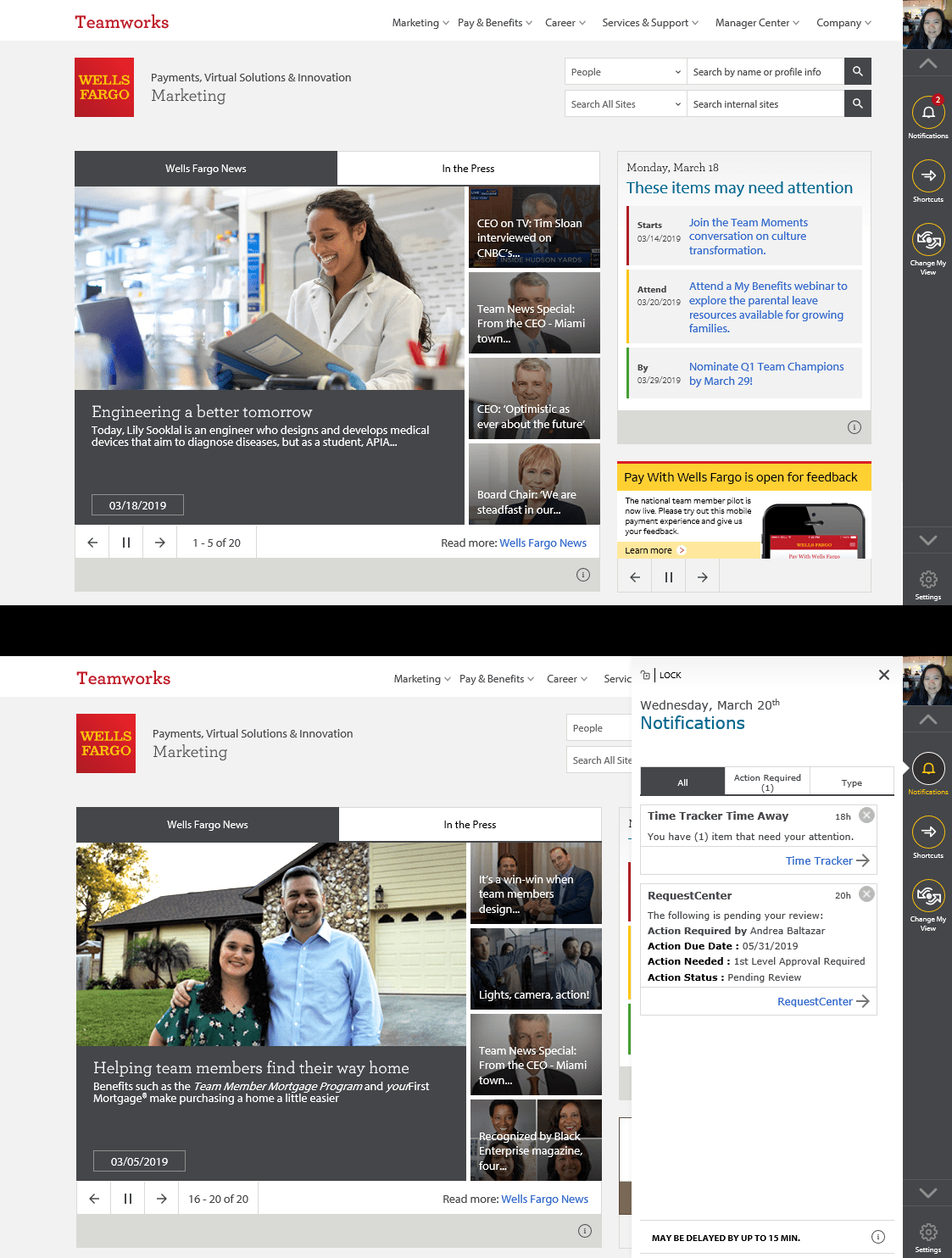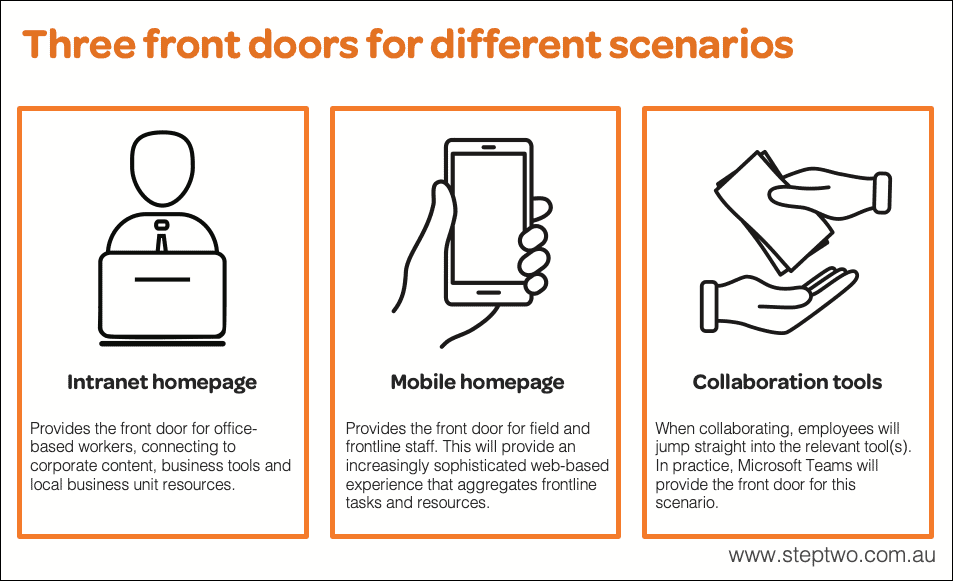
Filed under: Digital employee experience, Digital workplace, Intranets
The landscape of enterprise tools and systems isn’t getting simpler over time. Quite the opposite: whole new platforms are being put in place which offer substantial increases in capability, but often alongside other tools (instead of replacing them). In many respects, this is good news, as employees have often been lumped with ‘second-best’ tools that lag far behind consumer offerings.
What we know, however, is that employees won’t necessarily understand the differences and usage of these systems, and they don’t want to spend the time to find out. Fair enough! Our goal must be to provide simplicity for employees, when looking at the broader digital employee experience, even as we’re adding new capabilities.
A key element is to provide a clear enterprise front door, as a jumping off point to these many systems and tools. This article outlines the purpose of this front door, and puts shape around how to deliver one in practice.
The role of an ‘enterprise front door’
In today’s digital landscape, an enterprise front door plays two key roles:
An enterprise front door provides a jumping-off point the broader digital workplace, and provides visibility of what’s happening.
Breaking this down:
There are many different sources of information provided by multiple systems, alongside traditional intranet content. There are also growing numbers of tools for employees, each with its own purpose and capabilities. The enterprise front door adds value by providing a simple jumping-off point that users can confidently go to by default, knowing that they’ll be guided to take at least the right first click.
This is provided by traditional navigation, global menus, tailored lists of links and search. In many cases, employees are also given the option of tailoring their most common links and applications.
In the modern workplace, there’s a danger that in providing new platforms, we’re creating new silos, rather than breaking down barriers. This danger is particularly present for collaboration platforms, which lead to a lot of activity within individual teams and spaces, invisible by default to all others.
This is why a good enterprise front door must provide visibility of what’s happening. A common example of this is an ‘activity stream’ which surfaces collaborative activity within tools such as Yammer, etc. As paper forms and other legacy practices are ‘digitised’, and replaced with workflow tools and other enterprise systems, this activity can also be hard for employees to keep on top of.
The enterprise front door can also provide visibility of the tasks and processes that are underway within these systems.

The Wells Fargo intranet homepage (above) provides a good example of enterprise front door functionality, such as the flyout (below) that aggregates notifications via a microservices architecture. Screenshot courtesy of Wells Fargo.
Delivering a front door in practice
In most cases, the intranet homepage provides the natural way to deliver an enterprise front door. To varying degrees, it’s played this role for over a decade, giving access to content, and sharing corporate communications.
As the scope of functionality within the digital workplace increases, modern intranets will need to grow to match. This means adding richer capabilities into the homepage, always seeking to simplify and ‘join the dots’ between enterprise systems, both new and old.
A powerful example of this is the provision of an ‘universal inbox‘ (also called a ‘universal task list’). This provides a simple list of outstanding tasks for the current user, drawn from multiple systems, cutting through an enormous amount of complexity. Previously this has been infeasibly technically complex to do, but modern intranets have access to much more powerful platforms to make this happen.
Intranet homepages should therefore constantly evolve over time, to deliver a progressively better enterprise front door, as tools improve and expectations increase.
Advanced approaches
With the rollout of platforms such as Microsoft 365, and Workplace by Facebook, employees are often finding themselves spending the bulk of their time in collaboration spaces, rather than in the intranet or other traditional enterprise systems. The shift to flexible working is also highlighting the importance of mobility, including the provision of ‘mobile first’ solutions (see the article Five layers of enterprise mobile design for more on this).
For this reason, a growing number of organisations are choosing to build their own front doors, rather than just relying on a single product or vendor. While requiring a greater investment up front, this gives organisations complete ownership of their front doors, allowing them to stitch together coherent experiences that integrate equally with multiple systems.
In this complex landscape, it can also be simplistic to assume that a single enterprise front door will meet needs, particularly when it’s an evolution of the traditional intranet homepage. For this reason, some in the space are exploring more advanced approaches to the provision of an enterprise front door (the Hubs, hives, and hangouts model from Sam Marshall is a good example of this).
In our consulting work, we’re helping organisations explore these advanced approaches. For example, in one complex organisations, we outlined a model of not one, but three front doors:

These are ideas that we’re continuing to explore with our clients, and we also look forward to seeing what emerges from peers in this space.
Keep it simple!
Above all things, we must strive to deliver simplicity to employees. This means we should act as early as possible to establish a meaningful enterprise front door. This will help to cut through the complexity, even as new platforms and tools are put in place.
While it is no ‘silver bullet’, having an effective enterprise front door is a necessary element of a digital employee experience that delights and empowers our workforce.





